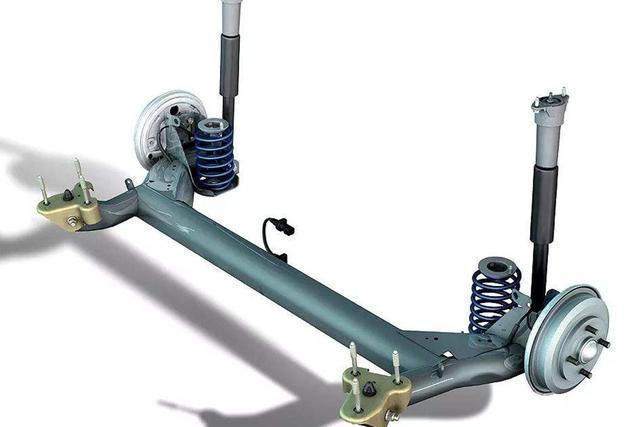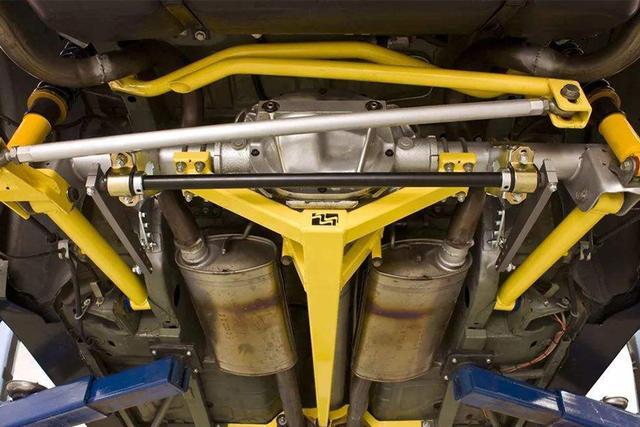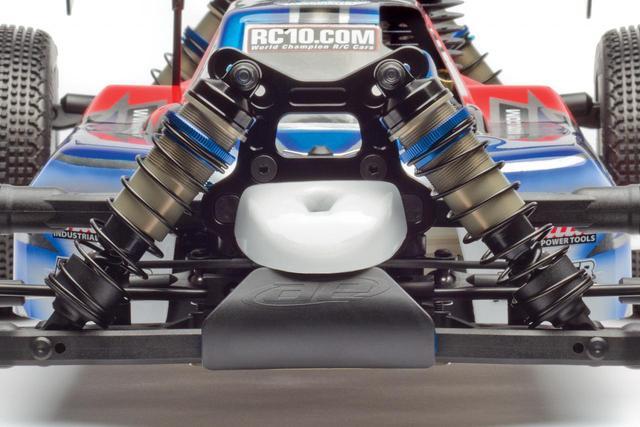When buying a car, I believe everyone has heard from the salesman or friends around him: This car is good, multi-link! That car doesn’t work, the rear axle is still a torsion beam! I often see this kind of remarks on the Internet: the torsion beam is the reduction! All kinds of sayings must be familiar. But actually?

Before talking about multi-links and torsion beams, let’s talk about suspension systems. As we all know, a car has to run on the road, which has ups and downs and bumps. If there is no suspension system and our wheels are directly fixed to the car body, all the bumps on the road will be transmitted to the car body, and when encountering rough places, a certain wheel will still leave the ground. This is obviously not in line with our car needs.

The suspension system is the connecting device between the frame and the axle or the wheels. In addition to allowing the wheels to drive the body forward, it also has the function of buffering the impact force transmitted from the potholes to the frame or the body. contact with the ground, thereby maintaining good grip and leading to better driving ability. So when we talk about suspension, the two aspects we often comment on are comfort and driving performance.

The suspension system also includes a variety of suspension forms, such as McPherson, double A-arm, integral bridge, multi-link, torsion beam, etc. that we often hear. This time we only focus on the two suspension structures of rear axle multi-link and torsion beam, because these two are the closest to our life and the most controversial.
What is multi-link suspension

We literally understand that multi-link refers to a suspension structure consisting of three or more links with multiple links. More links mean that this suspension structure will have more control dimensions and more room for adjustment. From the inside of the car, this structure allows the tires to have a more reliable driving track. The former three-link suspension structure can no longer meet people’s requirements for chassis control, and now the mainstream multi-link suspension is already four-link or five-link. This suspension structure can be used on the front or rear axle, but we usually discuss it when it appears on the rear axle.

Strictly speaking, the suspension structure is divided into two types: independent suspension and non-independent suspension, and multi-link belongs to independent suspension. We can refer to the picture above for the meaning of independent suspension. As the name suggests, independent suspension means that the suspension structure of each wheel is independent, and the movement of each other is also independent without interfering with each other. For example, if the left wheel passes through bumps, the right wheel will not be disturbed. Since there is independent suspension, there is non-independent suspension. For example, the torsion beam suspension we will mention below.
torsion beam suspension

This kind of suspension can be said to have been criticized by many people who “know cars”, and it is also nicknamed “baner suspension”. We can see from the structural diagram above that this suspension structure is much simpler than multi-link, and the wheels on the left and right sides are connected together by a beam. The structure is much simpler than multi-link, and it seems that one side of the wheel is beating , will interfere with the other wheel. However, the beam on most passenger cars is allowed to deform to a certain extent, so although there will be interference on both sides, it is not 100% perfect, which is why some manufacturers call this suspension structure semi-independent suspension .

Then this kind of suspension structure is as brainless, simple and advanced as it looks on the structure diagram? No, many factors can affect the characteristics of the suspension structure, such as the cross-sectional shape, cross-sectional size, material strength, opening direction, bushing safety angle, etc. of the torsion beam. In other words, although the torsion beam suspension structure is simple, it is not a simple technology, and there are not many controllable dimensions, at least not as few as we seem.

The inherent structural shortcoming of the torsion beam is that although the beam in the middle is flexible, its inclination angle changes very little when the wheel jumps, which makes it impossible to maintain the bottoming area to the greatest extent in the limit state. But in civilian-level cars, this limit cannot be touched at all. Through good matching with springs and shock absorbers, torsion beam suspension can also have excellent comfort and sportiness.

For example, the well-known French cars are famous for the rear torsion beam suspension, and their texture and comfort are not inferior to the rear multi-link models of the same price. Moreover, the torsion beam suspension structure saves more space, has a simple structure, and has better reliability.

Not to mention the sports models, I believe everyone knows how good the Fiesta ST suspension is in terms of sportiness, and the Megane RS is also outstanding.
How to choose?

In fact, my suggestion to everyone here is not to be too entangled in the structure, because the performance adjustment of most passenger cars is still difficult to reach the limit of the structure, that is, it is not yet the turn to fight for “talent”. In fact, what determines the ride comfort or driving performance is the manufacturer’s tuning skills, not the suspension structure. In the market, there are many multi-link suspensions with muddled suspension performance and texture. So how to choose? Go and test drive yourself. Let your own ass give yourself a reference.
Summary: In fact, the same is true in other parts of the car. Is AT gearbox better than CVT? The driving experience of a good CVT gearbox is not bad, and there is no problem with reliability; must dual clutches not be required? Porsche’s PDK performance can be said to be perfect; must a 6-cylinder engine be better than a 4-cylinder engine? must!
Source of pictures and texts: This article is an exclusive manuscript of Tencent Auto, and the copyright is owned by Tencent Auto.




